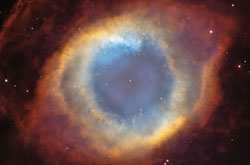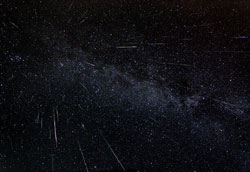




In other Mars news, I may get the opportunity to do some work on an instrument that will be on an upcoming Mars rover. How cool is that?! I'll keep you posted.

This image was taken by Hubble in June of this year, when Mars was ~43 million miles from Earth — the closest it's been since 1988. Speaking of Mars being close to the Earth - there is a rumor going around about Mars. There has been an email circulating that on August 27th, 2005, Mars will be so close to the Earth that it will be as big in the sky as the full moon. This is just ridiculous! While Mars will be closer than it has been in a LONG time, The actual difference distance is only about 1%. So Mars will look about 1% bigger in the sky than on a normal approach. If Mars were to actually be close enough to look as big as the full moon, its gravity would throw earth out of its normal orbit and raise huge, terrible tides. So be sure to check out Mars this fall, but don't buy into this hoax!

This first image is one taken during the Perseid meteor shower last August. The photographer is the astronomer Fred Bruenjes. He recorded a series of 30 second exposures spanning six hours during the meteor shower. This year, the Perseids meteor shower will peak in the early morning hours on Friday, August 12 - but can also be seen during the wee hours of the morning on Saturday. If you're interested in this meteor shower, be sure to catch it this year. Next year there will be a full moon during the peak of the shower, making it too bright to see any meteors.
